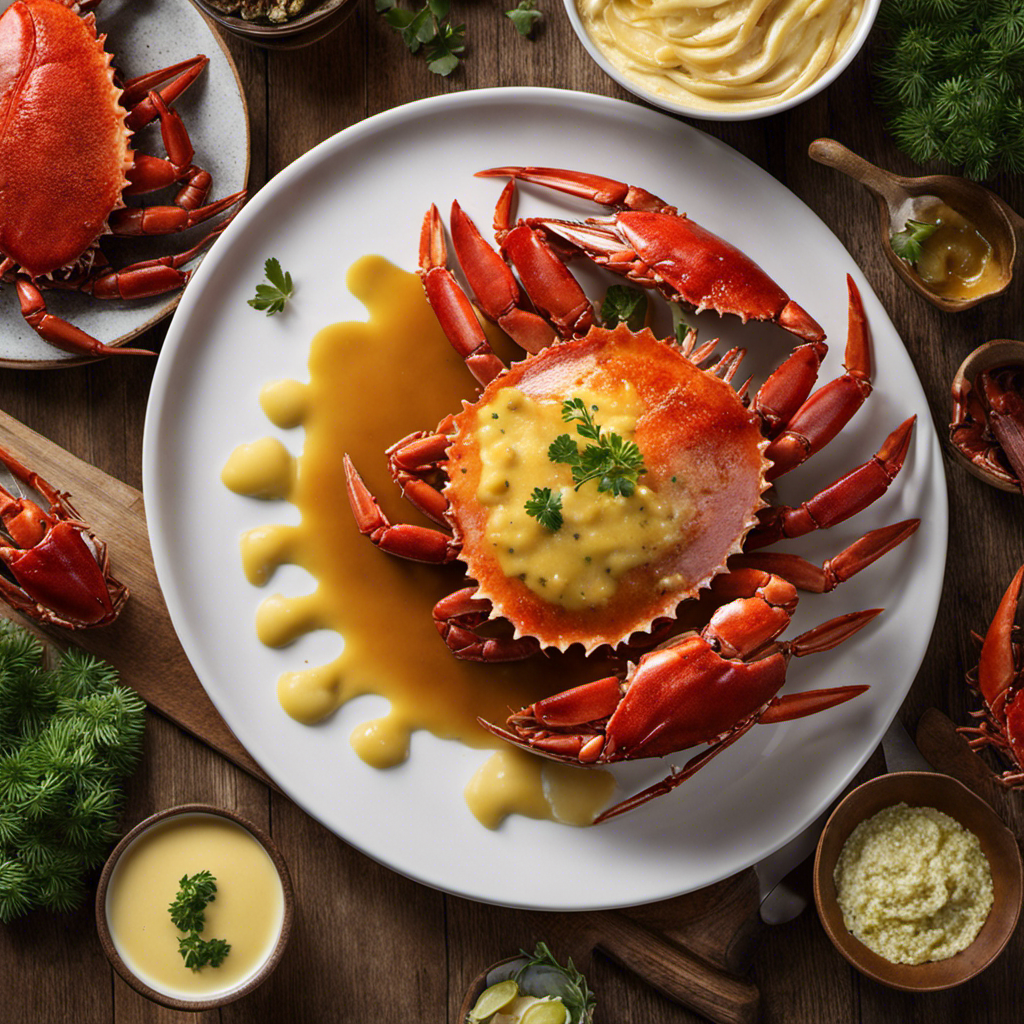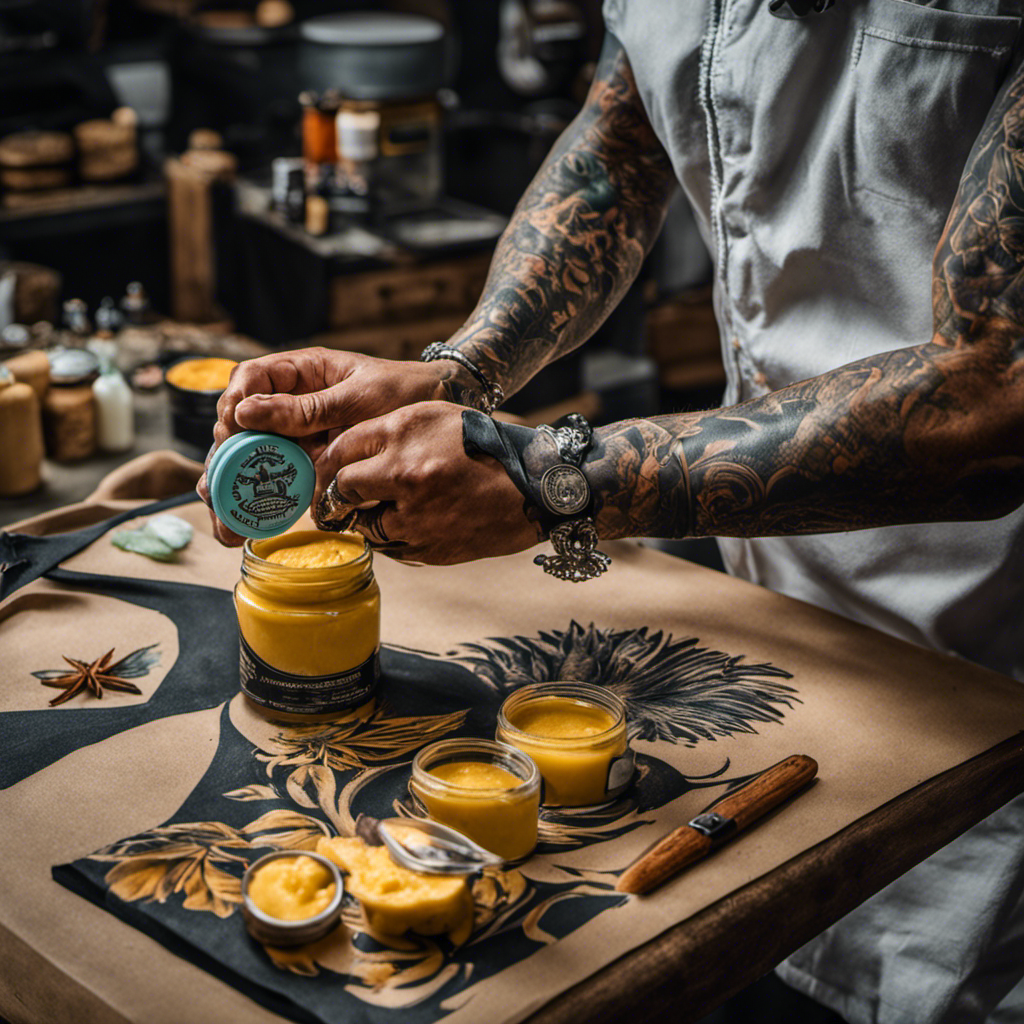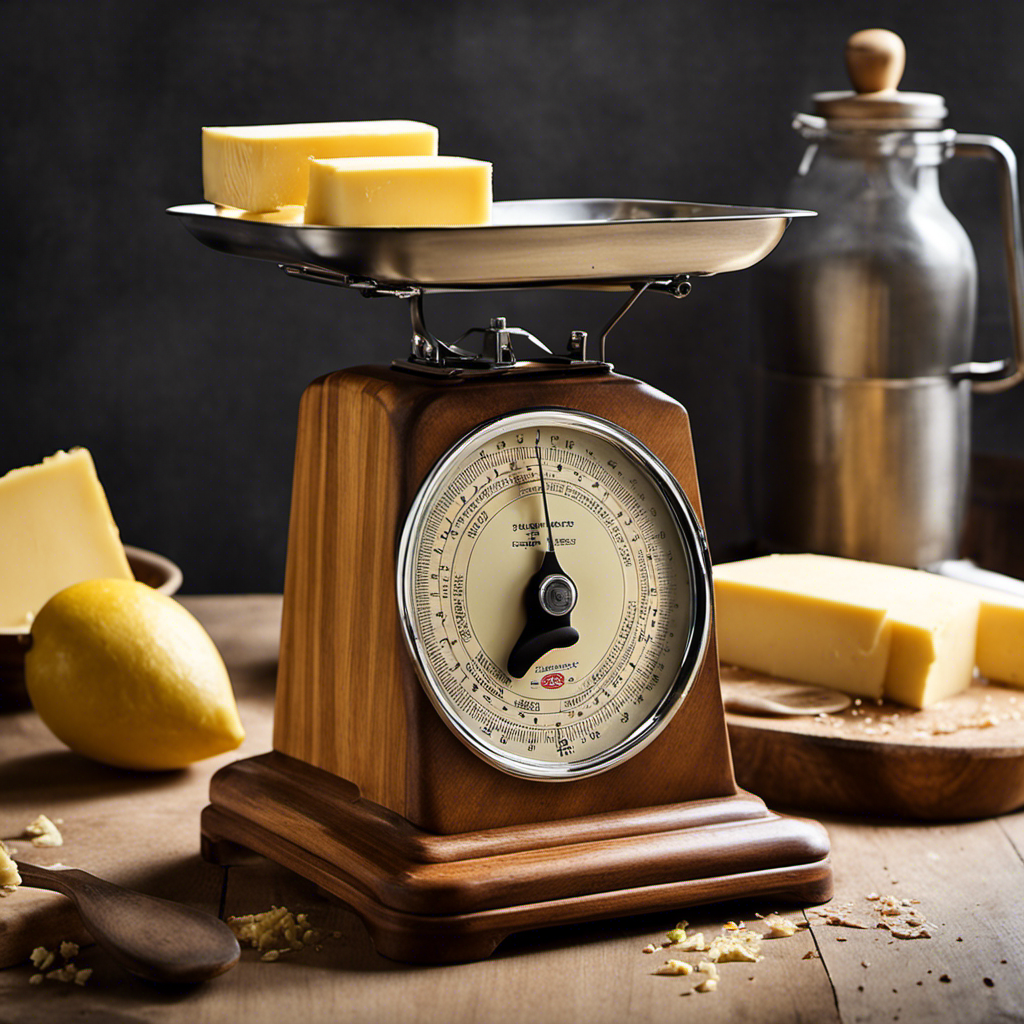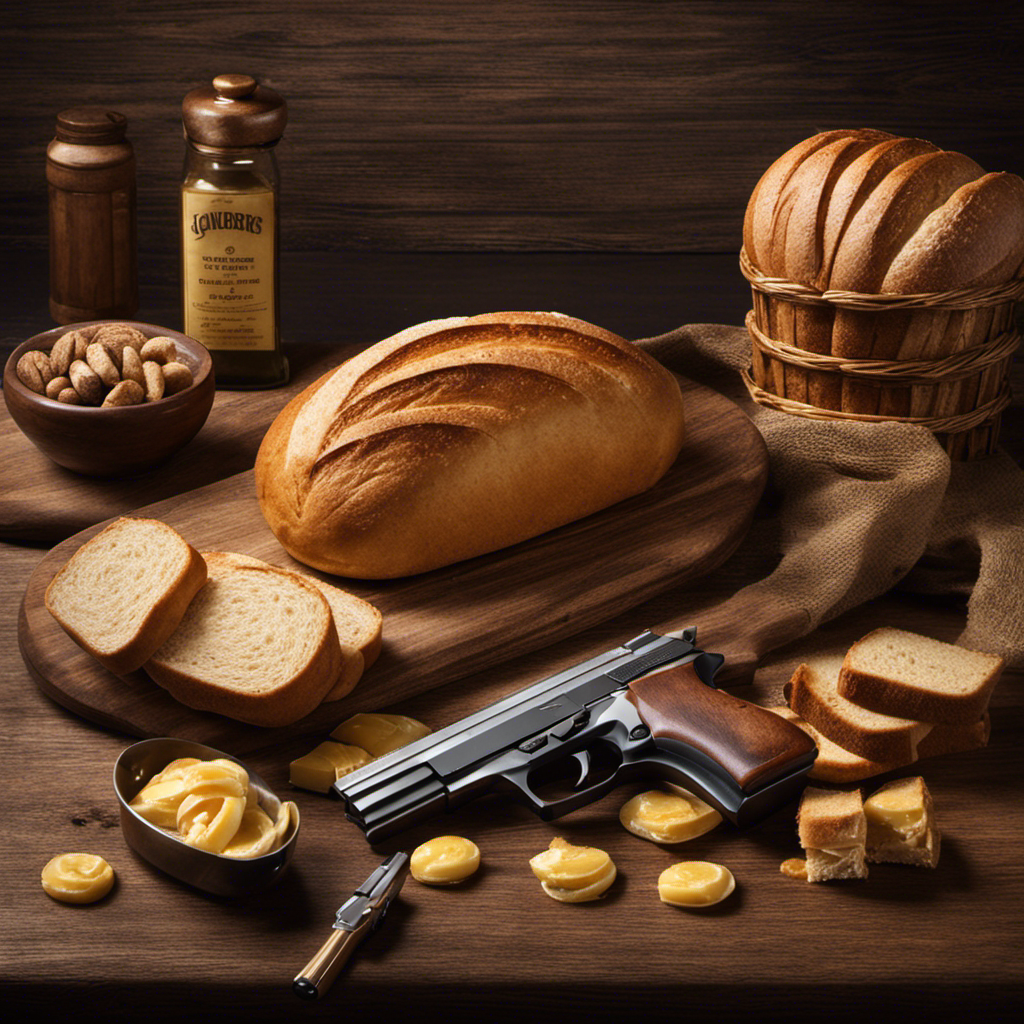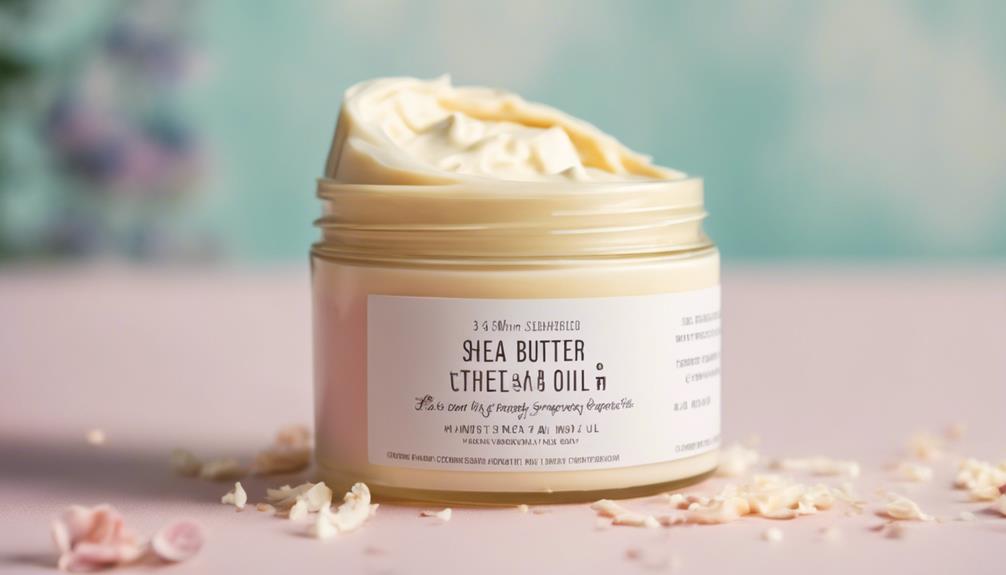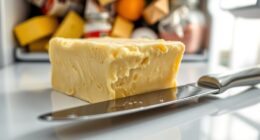I have always enjoyed the rich and creamy flavor of butter, however, it can be difficult to find heavy cream at the store sometimes.
That’s when I discovered a simple and satisfying way to make homemade butter without heavy cream. In this article, I’ll guide you through the process, step-by-step, using common ingredients and equipment you probably already have in your kitchen.
Get ready to churn your way to delicious, homemade butter that will elevate your culinary creations to a whole new level.
Key Takeaways
- Homemade butter can be made using fresh whole milk with higher fat content.
- A large glass jar with a lid is necessary for the churning process.
- A whisk or hand mixer is used to separate the fat from the liquid.
- Yogurt and sour cream can be alternative methods to make butter with different flavors and textures.
Understanding the Basics: Ingredients and Equipment
To make homemade butter without heavy cream, you’ll need a few basic ingredients and equipment. Understanding the process, necessary ingredients, and tools for making homemade butter using milk, not heavy cream is essential.
Firstly, you will need fresh whole milk, preferably with a higher fat content. The fat in milk is what will eventually turn into butter. Additionally, you will need a large glass jar with a lid, a whisk or hand mixer, and a strainer. These tools will help you separate the fat from the liquid, known as buttermilk.
Understanding the importance of these ingredients and tools sets the foundation for successfully churning butter from milk. With these in hand, let’s move on to the step-by-step process of turning milk into butter.
Step-By-Step: Churning Butter From Milk
Start by pouring milk into a jar and shaking it vigorously until butter begins to form. Making butter at home can be a rewarding and delicious process. However, it’s important to understand the differences between traditional and modern butter churns.
Traditional churns require manual effort and time, while modern churns offer convenience with electric or hand-crank options. Troubleshooting common butter making problems is crucial for a successful outcome. Here are some common issues and solutions:
- Insufficient agitation: Shake the jar more vigorously to encourage butter formation.
- Temperature too low: Allow the milk to warm slightly before shaking to promote butter separation.
- Over-churning: Stop shaking once butter forms to prevent the mixture from becoming too stiff.
By understanding these differences and troubleshooting common problems, you can achieve a smooth and creamy homemade butter.
Now, let’s explore alternative methods of making butter from yogurt, sour cream, or buttermilk.
Alternative Methods: Making Butter From Yogurt, Sour Cream, or Buttermilk
When it comes to making butter at home, there are alternative methods that can be explored beyond using heavy cream.
One such method is using yogurt to make yogurt butter, which involves straining the yogurt to remove the liquid and then churning it into butter.
Another alternative is using sour cream as a base for making butter, which can be done by simply whipping the sour cream until it separates into butter and buttermilk.
These alternatives provide interesting options for those looking to experiment with different flavors and textures in their homemade butter-making process.
Yogurt Butter Recipe
Mixing plain yogurt and salt in a blender until creamy is the first step in making yogurt butter.
Yogurt butter is a great alternative to traditional butter, and it offers several health benefits. Here are a few key benefits of yogurt butter:
- It is lower in fat and calories compared to regular butter.
- It contains probiotics, which are beneficial for gut health.
- It is a good source of calcium and vitamin D.
To make the yogurt butter, mix the yogurt and salt in a blender until it reaches a creamy consistency. Then, transfer it to a container and refrigerate for a few hours to solidify.
Once solid, you can use it as a spread or for cooking purposes. Enjoy the creamy goodness of yogurt butter while reaping its health benefits.
Sour Cream Alternatives
One popular alternative to sour cream is Greek yogurt. While both sour cream and Greek yogurt are tangy and creamy, they have some key differences when it comes to baking and making dips. In baking, sour cream is often used to add moisture and richness to cakes, muffins, and breads. Its high fat content helps to create a tender texture and enhance the flavor. On the other hand, Greek yogurt can also be used in baking, but it has a lower fat content and a slightly different taste. It can still provide moisture, but may result in a slightly tangier flavor and a denser texture. In dips, sour cream is often preferred for its creamy and smooth consistency, while Greek yogurt can add a tangy and slightly thicker texture. However, Greek yogurt can be a healthier alternative as it is lower in fat and calories.
| Sour Cream | Greek Yogurt | |
|---|---|---|
| Fat Content | High | Low |
| Creaminess | Creamy | Tangy |
| Texture | Smooth | Slightly thicker |
| Health Benefits | – | Lower in fat and calories |
Overall, both sour cream and Greek yogurt have their own unique qualities and can be used interchangeably in some recipes. It ultimately depends on personal preference and the desired outcome of the dish.
Adding Flavor and Variations: Infusing Butter With Herbs, Spices, or Sweeteners
To add flavor and variety to your homemade butter, you can easily infuse it with herbs, spices, or sweeteners. This simple technique allows you to customize your butter to suit your taste preferences and elevate your dishes to a whole new level. Here are some ideas to get you started:
-
Herb Infused Butter: Add chopped fresh herbs like basil, rosemary, or thyme to softened butter for a savory twist. Spread it on warm bread or melt it over grilled vegetables for an aromatic burst of flavor.
-
Spiced Butter: Mix in spices like cinnamon, nutmeg, or cardamom for a deliciously fragrant butter that pairs perfectly with toast or baked goods.
-
Sweetened Butter Variations: Incorporate ingredients like honey, maple syrup, or brown sugar to create a decadent spread for pancakes, waffles, or muffins.
By experimenting with different combinations, you can create a range of herb-infused butters and sweetened variations that will take your culinary creations to the next level.
Now, let’s discuss how to store and preserve your homemade butter for long-lasting freshness.
Storing and Preserving Homemade Butter
In order to ensure that homemade butter stays fresh and flavorful for as long as possible, it is important to store it properly. There are several methods for storing homemade butter, depending on personal preference and the desired shelf life.
| Storing Method | Shelf Life |
|---|---|
| Refrigerator | 1-2 weeks |
| Freezer | 6-9 months |
| Canning | 1 year |
| Clarified | 3-6 months |
| Salted | 2-3 weeks |
Refrigeration is the most common method for storing homemade butter. It can be kept in an airtight container or wrapped tightly in plastic wrap. Freezing is another option, which extends the shelf life of homemade butter significantly. Canning butter, although less common, can provide a shelf life of up to a year. Clarified butter, which has the milk solids removed, can be stored for 3-6 months. Lastly, adding salt to homemade butter helps to preserve it and extends its shelf life to 2-3 weeks. It is important to note that the quality and taste of homemade butter may deteriorate over time, so it is best to consume it within the recommended shelf life.
Creative Uses for Homemade Butter Beyond Spreading on Bread
Using homemade butter in baking recipes adds a rich and creamy flavor to cakes, cookies, and pastries. However, there are many other creative uses for homemade butter beyond just spreading it on bread.
Here are a few culinary experiments you can try with your homemade butter:
-
Whipped Butter: Whip your homemade butter until it becomes light and fluffy. This whipped butter can be used as a delicious spread for pancakes, waffles, or toast.
-
Compound Butter: Mix your homemade butter with herbs, spices, or other flavorings to create compound butter. This flavored butter can be used to elevate the taste of grilled meats, steamed vegetables, or pasta dishes.
-
Brown Butter: Heat your homemade butter until it turns a rich golden brown. This nutty and aromatic brown butter can be drizzled over roasted vegetables, mashed potatoes, or even used as a decadent sauce for pasta dishes.
Frequently Asked Questions
Can I Use Skim Milk or Low-Fat Milk to Make Homemade Butter?
Yes, you can use skim milk or low-fat milk to make homemade butter. However, it’s important to note that the nutritional differences between skim milk and heavy cream will affect the taste and texture of the final product.
How Long Does It Take to Churn Butter From Milk?
To speed up the butter churning process, it’s important to use cream with a high fat content and churn it at the right temperature. The best temperature for butter churning is around 55°F.
Can I Use Non-Dairy Alternatives Like Almond Milk or Coconut Milk to Make Homemade Butter?
Yes, non-dairy alternatives like almond milk or coconut milk can be used to make homemade butter. By separating the fat content from these milks, you can churn them into butter just like with heavy cream.
What Are Some Common Herbs and Spices Used to Infuse Butter?
When it comes to infusing butter, common herbs and spices like garlic, rosemary, and thyme are great choices. The benefits of making homemade butter without heavy cream are that you can customize the flavors to your liking.
Can I Freeze Homemade Butter for Long-Term Storage?
Yes, you can freeze homemade butter for long-term storage. Freezing butter is an effective way to preserve it. Make sure to wrap it tightly in plastic wrap or place it in an airtight container to prevent freezer burn.
Conclusion
In conclusion, making homemade butter without heavy cream is not only possible, but also a fun and rewarding experience. By understanding the basic ingredients and equipment needed, anyone can churn butter from milk with ease.
For those looking for alternative methods, using yogurt, sour cream, or buttermilk can also yield delicious results. Adding flavor and variations by infusing butter with herbs, spices, or sweeteners opens up a world of culinary possibilities.
And don’t forget to store and preserve your homemade butter properly to enjoy it for longer. So, why wait? Start churning your own butter today and unleash your creativity in the kitchen!

